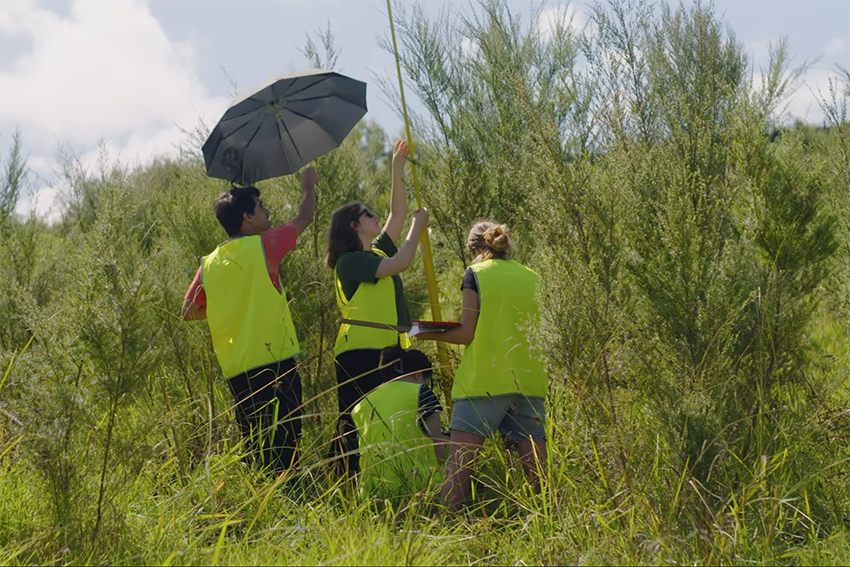Take a look inside AUT's Living Labs

A new video looks at how AUT's Living Labs project is connecting people to nature by interweaving ecological science and mātauranga Māori.
The Living Labs project was established in 2019 and transforms former agricultural sites into a vibrant living laboratory that combines research and meaningful restoration work such as planting trees, monitoring growth, measuring the impact of weather patterns and learning about the different types of native plants that form a part of the unique ecosystems of Aotearoa.
Dr David Hall, a co-investigator at AUT's Living Labs, says the project was created with fellow co-investigators, Professor Hannah Buckley and Associate Professor Brad Case of the School of Science, as a practical way to address the twin crises of climate change and biodiversity loss.
“In the face of mounting environmental and climate crises, education has a key role to play in developing and sharing solutions that learn from and work with nature,” Dr Hall says.
“Universities must adapt and innovate to respond to these challenges, to create new learning experiences and new ways to make research relevant for local communities. The AUT Living Labs grew out of a desire to radically rethink the roles and responsibilities of research and learning.”
A gift from the Whakatupu Aotearoa Foundation last year supported the creation of the Learning from Nature initiative: a transformational environmental education experience for young people that inspires positive and enduring awareness of environmental restoration in action.
The first Living Labs site on Ngāti Whātua Ōrākei land in Pourewa now serves as an outdoor classroom that connects people to nature by interweaving ecological science and mātauranga Māori, supporting students to become active, informed, and environmentally conscious citizens.
In partnership with the Whakatupu Aotearoa Foundation, a new video explains the history of the Living Labs project, the importance of the research being undertaken there and how primary and students from across Aotearoa are using these sites to foster a deeper connection to the land they are on.